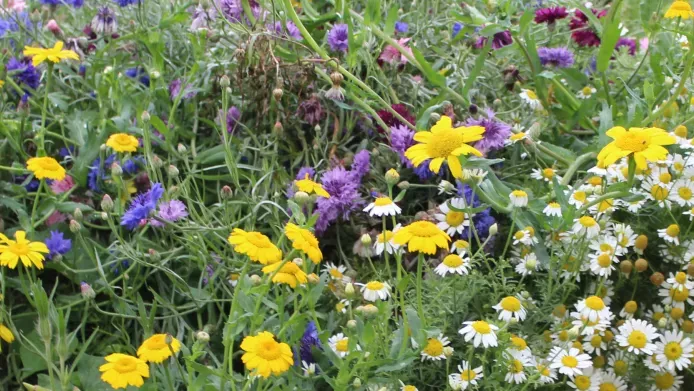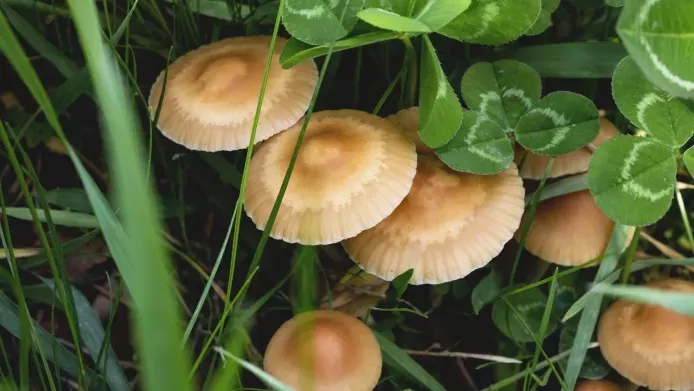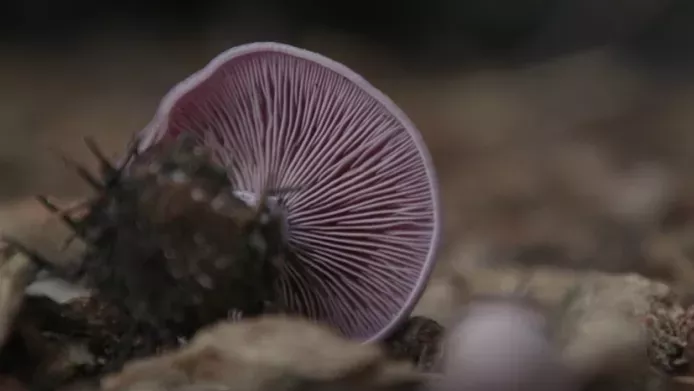Mycology postgraduate student, Alessandro, introduces us to Gibellula fungi, a group of parasitic fungi that exclusively infect spiders to survive and reproduce. What's so unique about these fungi? Should we fear them? Might you have a role to play in monitoring one of the UK's most feared creepy crawlies?
Ever since the discovery of Gibellula fungi in the 1800s there have been lots of questions surrounding them. All Gibellula fungi are spider pathogens, meaning they infect spiders and kill them to survive. If we can understand more about the diversity of Gibellula species, then we can learn if there are specific conservation needs for the spiders that they infect.
Alessandro’s conservation research project involves understanding more about the taxonomy of the Gibellula fungi, which means finding out about new species and how species behave as pathogens.
What is a pathogenic fungus?
Some fungi are pathogens, which means they cause disease in plants or animals that they infect.
Fungal pathogens that target insects and other arthropods (such as spiders) are called entomopathogenic fungi. Fungal pathogens exclusively target spiders are called araneopathogenic fungi. These fungi are mostly classed in the family Cordycipitaceae, which includes the genera Gibellula and Cordyceps fungi.
Entomopathogenic fungi infect, disable, and kill their host to create reproductive structures to propagate their fungal spores.
How fungi use their spider hosts to reproduce
In spiders, fungal infection occurs when spores land on and recognise a suitable host. The invasion of the spider’s body is followed by the fight for its immune system.
A Gibellula fungus need the spider host to eventually die, so that it can propagate its spores to reproduce. Depending on what type of insect the host is, the way that the fungus spreads its spores is different.
Gibellula fixes the spider to surfaces like the underside of leaves and caves, entombing it with a fine layer of mycelium, later developing synnemata ‘stalks’ which release spores at the tips.
What is a spore?
A fungus releases microscopic particles called spores, which can grow into a new fungus. Spore propagation is the reproductive phase of a fungus. In ways, this process is similar to when plants produce pollen.
Spores can be distributed in many different ways. For example, Gibellula alata has a wing-like structures of mycelium, thought to help distribute detached synnemata by the wind.
 Gibellula alata. 1A & 2A show yellow ‘stalks’ protruding from the mycelium entombing the spider. 1B & 2C shows the conidial head with spores at the tips. 1C & 2D show the conidial head in 3D.
Gibellula alata. 1A & 2A show yellow ‘stalks’ protruding from the mycelium entombing the spider. 1B & 2C shows the conidial head with spores at the tips. 1C & 2D show the conidial head in 3D.
So, does this mean spider zombies?
Sometimes, a fungus might cause an infected insect or spider to leave its normal environment or change its regular behaviour.
For example, some species of Cordyceps infect ants and cause them to move away from their colony to target new places for fungal spore propagation. Little is known about the biochemical processes that cause this to happen but the way the fungi works is thought to be specific to the type of insect.
 Ant infected with Cordyceps fungus
Ant infected with Cordyceps fungus
Can parasitic fungi infect humans?
Despite popular sci-fi TV series like The Last Of Us, “zombie-style” entomopathogenic fungal infections are not possible in warm-blooded animals like humans. The fungi that manipulate insect behaviours have co-evolved over thousands of years to target specific species in specific environments.
There are some types of fungi that can infect humans, however, such as those that cause athlete’s foot and ringworm. There’s lots of research being done to improve the prevention and cure of fungal infections, with the World Health Organization (WHO) recently releasing the world's first fungal priority pathogens list, a “most wanted list” of the 19 most dangerous fungi to human health.
Are there fungal spider pathogens in the UK?
Yes, there are! In Europe and northern hemisphere climates the most prevalent species of Gibellula are Gibellula pulchra, and Gibellula leiopus. These species attack the most common and diverse spider families, such as Linyphiidae spiders (including money spiders).
Gibellula is found in a variety of habitats in the UK including grasslands, heathlands, old growth forests, and close to different sites of scientific interest (SSSIs) in semi-urban environments and towns.

A threat to ecosystems?
Many entomopathogenic fungi are important for keeping our ecosystems in balance. However, it's important we learn as much as we can about them to monitor how they change and adapt.
Like them or not, spiders play a pivotal role in ecosystems. In some habitats you need spiders to manage insect populations. Because Gibellula species kill spiders, they can pose a threat to our ecosystems.
Where we see changes in the habitats of spiders, different fungal pathogens could emerge. We need to understand how often new species of Gibellula arise to really understand the true threat to the diversity and abundance of spiders and what that could mean for different environments.
How to recognise a fungus-infected spider
If you want to help by searching for fungus-infected spiders, go out into your local environment, particularly to places with microhabitats of spiders.
If a spider has been infected with a Gibellula fungus it will likely be:
- attached to a surface with light-coloured mycelium
- have stalk-like structures (synnemata) coming out of it
- dead
The easiest thing to do is record and geolocate dead spiders that have been attacked by fungi. This will help learn about habitat patterns. You can record your findings on an accessible database, such as iNaturalist. Simply search for a species or genus like "Gibellula".
 Mycelium looks like a web of branching thread-like structures (called hyphae), like tiny plant roots.
Mycelium looks like a web of branching thread-like structures (called hyphae), like tiny plant roots.
Spiders aren't always the most loved creatures, and people don’t often collect or look for them. This means there's a massive specimen and sampling bias compared to other animals and insects. Research projects like Alessandro’s play a crucial role in helping us understand the relationships between fungi and their spider hosts, contributing vital insights for biodiversity preservation and ecosystem balance.
If you want support with finding and identifying fungi in your local area, visit the British Mycological Society website to find a fungi support group near you.
Get to know Alessandro
I’ve always cared about the environment and biodiversity, and I got interested in fungi through reading books that highlighted the pivotal ecological role of different types of fungi. A lot of research about fungi - such as how fungi could affect our lifestyles and work and provide solutions to plastic degradation and contaminated land - is only just evolving, but pathways have been identified by amazing amateur mycologists against the grain of industries for years.
This is where I wanted to take my career. Working with these incredible processes and providing stewardship towards environments, rather than exploiting ecological aspects for societal resources.
To understand how fungal life is symbiotic with our own, we must reflect on our own habits and how we are living as a global community. It’s about conserving and diversifying practices that conserve our planet's habitats and ecology.
Glossary
In biology, taxonomy is the science of naming, classifying and categorising groups of organisms.
A genus (plural genera) is a group that describes more than one species. For example, there are many species of roses that are part of the Rosa genus, such as the UK native species Rosa canina.
A habitat is an environment where an organism lives.
A microhabitat is a small area with unique conditions differing from the surrounding habitat. For example, where a woodland is a habitat, a rotten branch is a microhabitat.
More from the blog



